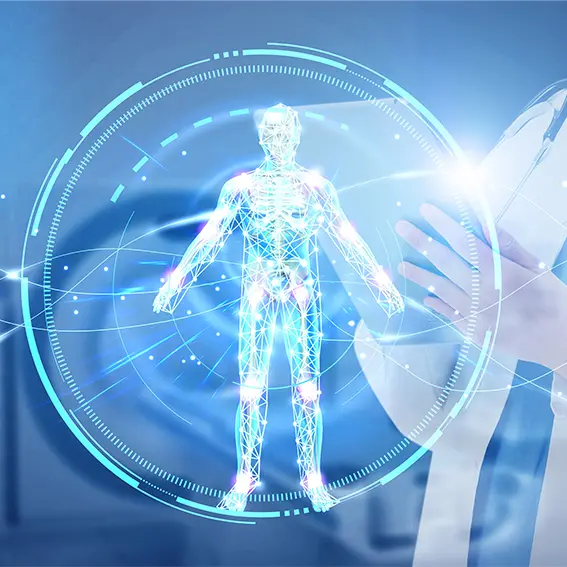
1 | Why Fully-Integrated Rehabilitation Matters
Global initiatives such as WHO’s “Rehabilitation 2030” call for rehabilitation to be woven into every level of health delivery, not tacked on as an afterthought. Evidence shows that systems built around continuous, interoperable rehab services improve functional outcomes, expand access, and reduce total costs across the care continuum.
2 | End-to-End, Person-Centric Pathways
Integrated programs map the entire recovery journey :
- Early mobility & intensity in acute care to prevent de-conditioning.
- Goal-directed outpatient blocks that blend manual techniques, task-specific practice, and aerobic conditioning.
- Community & workplace reinsertion supported by remote monitoring and environmental adaptations.
Embedding the pathway in a single electronic plan of care keeps goals, session notes, and outcome metrics visible to every stakeholder—clinicians, payers, and the individual. CMS’s quality strategy now rewards such cross-setting transparency.
3 | Digital Enablement & Telerehabilitation
Seven new clinical-practice recommendations from the American Physical Therapy Association lay out evidence-backed steps for safe, effective tele-rehab—covering onboarding, tech checks, privacy, and hybrid scheduling. Randomized trials confirm that, for many musculoskeletal and cardiopulmonary conditions, virtual sessions match in-person gains when dosage and feedback are equivalent.
Key digital tools:
| Tool | Purpose | Typical Metric |
|---|---|---|
| Synchronous video | Real-time coaching & progression | ≥90 % exercise adherence |
| Asynchronous apps | Self-paced home programs | Avg. reps/session |
| Wearable IMUs | Motion range & step count | Δ gait speed (m s⁻¹) |
4 | Robotics, Neuromodulation & Assistive Tech
- End-effector robots paired with neuromodulation (e.g., tDCS) accelerate upper-limb recovery after stroke. Clinical data show statistically significant gains in dexterity, though translation to daily-life function still requires adjunct functional practice.
- Soft exosuits and powered orthoses reduce metabolic cost during gait training, freeing aerobic capacity for longer sessions.
These devices slot into integrated workflows through common data standards (IEEE 11073, Bluetooth LE), feeding kinematic streams directly to the rehab record.
5 | Data Interoperability with the ICF
The International Classification of Functioning, Disability and Health (ICF) provides a shared language for body functions, activities, participation, and contextual factors. Coding each session’s goals and results in ICF terms allows aggregation across sites, easier benchmarking, and alignment with national disability statistics.
6 | Outcome Measurement & Value-Based Payment
Unified post-acute payment models use Rasch-scaled mobility and self-care scores to compare effectiveness across inpatient-rehab, skilled-nursing, and home-health settings. Programs that document faster, durable gains are eligible for shared-savings pools under CMS pilots.
Common KPI dashboard:
| Domain | Example KPI | |
|---|---|---|
| Mobility | 10 m walk speed | |
| Upper-limb | Box & Blocks count | |
| Participation | Return-to-work days |
7 | Digital Twins for Precision Rehab
Emerging frameworks model each person’s neuromusculoskeletal system—bones, joints, muscle actuators—and update the simulation with sensor data every session. The virtual twin forecasts safe load limits and suggests parameter changes (speed, resistance) before fatigue or pain sets in.
8 | Workforce & Multidisciplinary Teams
Integrated solutions thrive on blended skillsets :
- Movement scientists interpret sensor and imaging feeds.
- Engineers maintain robotics & connectivity.
- Coaches/community health workers bridge lab-to-life transitions.
Continuous professional development, anchored in WHO and APTA modules, keeps competencies aligned with rapidly evolving tech.
9 | Safety, Risk & Inclusivity
Risk assessment draws on WHO biosafety principles, adapted for human movement labs (e.g., fall-arrest harnesses, UV-C disinfected equipment). Tele-platforms must comply with national privacy acts and provide low-bandwidth modes to avoid digital exclusion.
Rehabilitation Therapy Integrated Solutions unite evidence-based pathways, tele-enabled delivery, robotics, interoperable data models, and value-based financing. The result is a responsive ecosystem where progress is transparent, resources are optimized, and individuals reclaim function faster—at home, at work, and in the community.